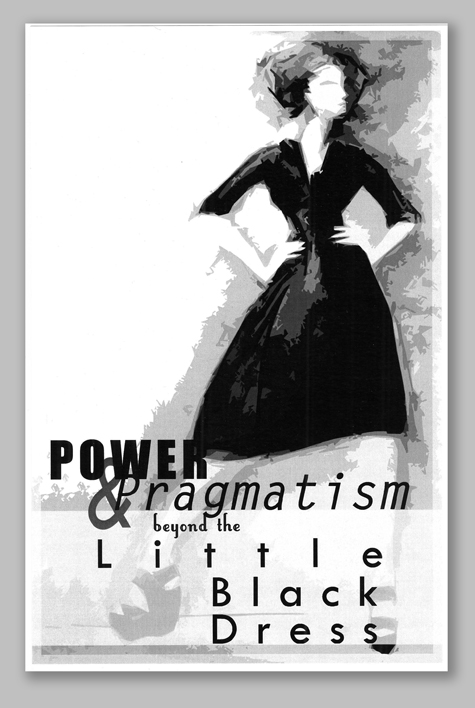
Hillestad Gallery Reopens with "Power and Pragmatism"
10 Oct 2009
After a summer-long renovation the Robert Hillestad Textiles Gallery reopens on Wednesday October 14 with a reception to honor gallery donors and supporters and a panel discussion and informal modeling to celebrate the newest exhibition, Power and Pragmatism: Beyond the Little Black Dress. The entire UNL community and the public are invited to these free events beginning at 6:30 p.m. in room 11 of the Human Sciences Building on East Campus, and continuing in the Hillestad Gallery in the Department of Textiles, Clothing & Design on the building's second floor.

Lace emphasizes the allure and seductive power of black
The exhibit includes 48 garments, the earliest, a lace dress from the late 1860’s, and the newest, a sweater created in 1983 by Japanese deconstructionist designer Rei Kawakubo.
The collection of black garments, including but not limited to the “little black dress,” conveys several messages on the subject of dress and adornment. They represent the practical, conservative nature of Nebraska dress in the late 19th and early 20th centuries, and they supply evidence of the refined cut and sculptural quality of black dress in relation to the body. Limiting the selection to black allows the viewer to read the depth and richness of the fabrics as well as focus on the wide range of surface treatments used on the garments. These include beadwork, appliqué and tunnel stitching. As conservative as many of the items are, functioning for work, exercise and mourning, they nevertheless embody a feeling of authority and sophistication. Styling spans more than a hundred years and reveals the different attitudes toward dress at various periods in our social history.

The silhouette and architecture of the garment are set off dramatically in black
An exhibit of this depth is made possible in part by the donors who made conscious decisions to preserve important items by donating them to TCD's Historic Costume collection. One such donor is Katie Best of Omaha, some of whose garments are included in the exhibition. A long-time collector, Mrs. Best is a member of the Costume Society of America.
The exhibit explores the range of motives for wearing black and includes several renditions of not only the “little black dress” but the “powerful black suit”. One example is a rich velvet shirt dress by Anne Fogarty, donated by the late Mary Louise Babst, one of Lincoln’s beloved fashion authorities. Another donor, Mrs. Thomas (Marjorie) Woods, has played a significant role in building the late 20th century part of the Historic Costume collection. The 1960 designers represented in her donations include Pierre Cardin and Norman Norell. Work by James Galanos is represented thanks to donations from Joan Furr. Other garments of note include a wool swimming suit from the 1890’s and a rare lace jacket featuring pagoda sleeves and botanical motifs. The selection of clothing in the exhibition effectively summarizes the different roles that dress plays in embodying conformity on the one hand, and individuality on the other.
The exhibition continues through November 6. For gallery hours please visit the Robert Hillestad Textiles Gallery website.
Textiles, Merchandising & Fashion Design